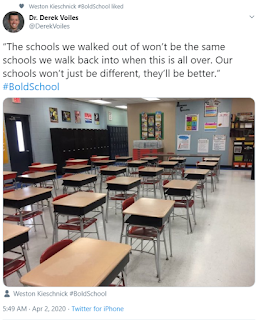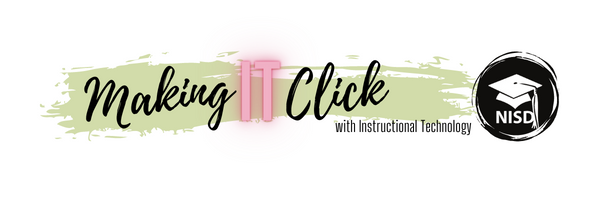While biological adaptation happens due to environmental stressors over long periods of time, mental and social adaptations can happen much faster under certain conditions. What we are currently witnessing in relation to teaching and learning is a change that not only shows what we, as humans, are capable of but also the degree to which our schools are capable of serving students. While education reform seems somewhat out of reach most days, times like this, although unfortunate in many ways, can force our constructs and viewpoints to change and ultimately result in natural and positive reforms. Dr. Derek Voiles put it best in a recent tweet when he said, “The schools we walked out of won’t be the same schools we walk back into when this is all over. Our schools won’t just be different, they’ll be better.”

Northwest ISD is fortunate to have many resources already in place to help make our staff and students successful during times like this. However, the particular challenge brought about by Covid-19 has shined a light on areas of need and allowed us to take steps to help improve things like online access, technology training, and remote communication. In addition, educators in our district have been given the challenge of using this time to really focus on student relationships, learning, and growth in very innovative ways.
Math typically takes a lot of practice and, traditionally, practice looks a lot like plugging away with a pencil, paper, and a calculator to work out a solution. While that pencil and paper practice is an important part of understanding the way math works, NISD Algebra II teachers took it a step further by trying their hands at an app called Explain Everything on the iPad where they smashed it together with Zoom to create incredible videos that bring calculations off the page for students.
In addition, Becky Spasic and Carla Dalton, at Byron Nelson High School, took this opportunity to share their knowledge of this app with fellow teachers by using it to create a “how to” video for implementing this strategy in a remote classroom setting. This strategy is one that adds an element of comfort and personalization to remote instruction while also helping students approach content from a variety of platforms.
When NISD teachers began looking at the shift to remote learning, many wondered how elementary students would be able to learn without being physically present with their teacher and classmates. How could our youngest children possibly manage their own learning tasks? It became apparent very quickly that most of our elementary teachers were teaching a level of independent learning prior to the break and that many of these students were able to adapt very quickly to a remote situation.
Seeing third grade students manipulate Google Slides and Google Drawings to illustrate understanding of ecosystems and food chains is truly an amazing process to watch and it almost makes you forget that you are watching eight and nine year olds as they move adeptly from one application to another while happily finding ways to showcase their knowledge. The teams of teachers creating these lessons know their students, know their capabilities, and have prepared their students to be self-sufficient learners.
Although the changes in the trajectory of society due to Covid-19 are some that we will be navigating for years to come, the world of education is one that is capable of mastering this shift and the obstacles that come with it. Educators are meeting this challenge head on with every bit of creativity and determination they have for the sake of their students. Some critics are predicting that this change will automate learning in a way that will make teaching an obsolete profession. However, through this, we are not only learning how much technology can help produce student independence but we are also learning how necessary human beings are in making the use of these tools relevant to learning and student success. Without previously established expectations and student relationships, these teachers would be dealing with completely different results. Educators are a necessary element to making learning meaningful for each and every one of their students and they cannot be replaced by technology. Circumstances like this will only enhance skills of both teachers and their students and everyone will grow as a result.




No comments:
Post a Comment
Note: Only a member of this blog may post a comment.